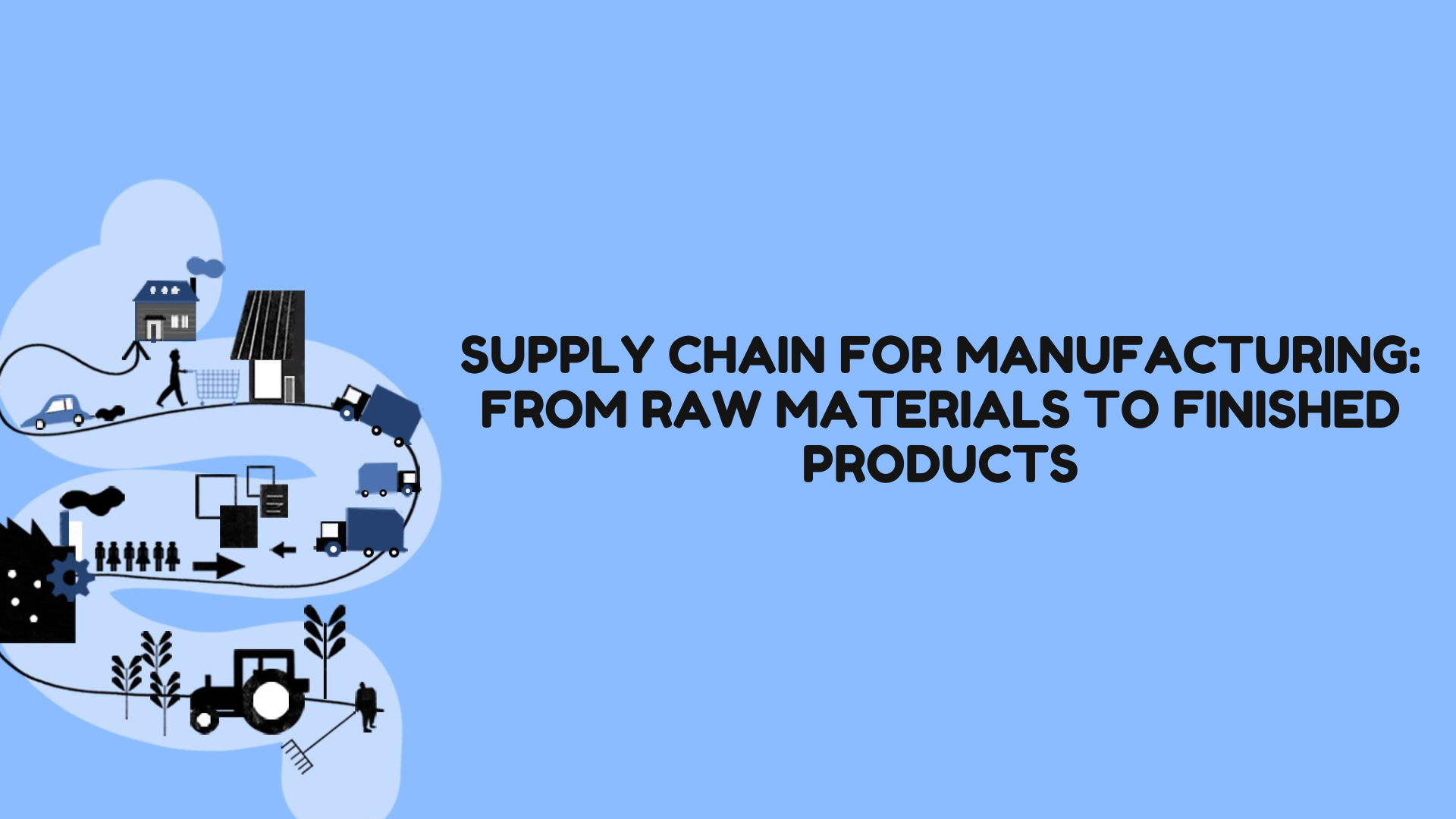An efficient and well-managed supply chain is crucial for ensuring timely production, maintaining quality, and meeting customer demands. This blog will guide you through the essential stages of the supply chain in manufacturing, highlighting key components, challenges, and best practices.
1. Sourcing Raw Materials
The supply chain begins with sourcing raw materials, which involves:
- Identifying Suppliers: Finding reliable suppliers who can provide quality materials at competitive prices. This may involve local suppliers or international vendors.
- Negotiating Contracts: Establishing terms of purchase, including pricing, delivery schedules, and payment terms.
- Quality Control: Implementing stringent quality checks to ensure raw materials meet the required specifications and standards.
Best Practices:
- Develop strong relationships with suppliers to ensure reliability and consistency.
- Diversify your supplier base to mitigate risks associated with supply disruptions.
2. Inbound Logistics
Once raw materials are sourced, the next step is inbound logistics, which covers:
- Transportation: Organizing the transport of raw materials from suppliers to the manufacturing facility. This could involve various modes of transport, such as trucks, ships, or trains.
- Warehousing: Storing raw materials in warehouses until they are needed for production.
- Inventory Management: Keeping track of stock levels to ensure there is always enough material to meet production demands without overstocking.
Best Practices:
- Use inventory management software to track stock levels and predict future needs.
- Optimize transportation routes to reduce costs and improve delivery times.
3. Manufacturing Process
The core of the supply chain is the manufacturing process itself, which includes:
- Production Planning: Scheduling production runs to maximize efficiency and meet delivery deadlines.
- Processing: Converting raw materials into finished products through various processes such as machining, assembly, and packaging.
- Quality Assurance: Continuously monitoring and testing products to ensure they meet quality standards and specifications.
Best Practices:
- Implement lean manufacturing principles to reduce waste and improve efficiency.
- Use real-time data analytics to monitor production and identify areas for improvement.
4. Outbound Logistics
Once products are manufactured, they need to be delivered to customers, which involves:
- Distribution: Selecting the most efficient distribution channels to deliver products to customers or retailers. This could include direct shipping or using distribution centers.
- Transportation: Organizing the logistics for delivering finished products, considering factors such as cost, speed, and reliability.
- Inventory Management: Managing finished goods inventory to ensure products are available when customers need them.
Best Practices:
- Use a transportation management system (TMS) to optimize delivery routes and reduce costs.
- Implement just-in-time (JIT) delivery to minimize inventory holding costs.
5. Customer Service and Returns Management
The final stage of the supply chain is ensuring customer satisfaction, which involves:
- Customer Service: Providing excellent support to address any issues or questions customers may have about the products.
- Returns Management: Efficiently handling returns and exchanges to maintain customer satisfaction and recover value from returned products.
Best Practices:
- Establish a robust customer service team to handle inquiries and issues promptly.
- Develop a streamlined returns process to minimize the impact on inventory and sales.
Challenges in the Manufacturing Supply Chain
Managing a manufacturing supply chain is fraught with challenges, including:
- Supply Chain Disruptions: Natural disasters, political instability, or supplier issues can disrupt the supply of raw materials.
- Cost Control: Balancing the cost of raw materials, transportation, and production while maintaining product quality.
- Technology Integration: Implementing and integrating advanced technologies like IoT, AI, and automation to enhance efficiency.
Overcoming Supply Chain Challenges
To address these challenges, manufacturers can:
- Diversify Suppliers: Reduce dependency on a single supplier by sourcing from multiple vendors.
- Invest in Technology: Adopt advanced supply chain management software to improve visibility and control over the supply chain.
- Enhance Collaboration: Foster collaboration between all stakeholders in the supply chain to improve communication and coordination.
Conclusion
The supply chain in manufacturing is a complex yet critical component of the production process, involving several stages from sourcing raw materials to delivering finished products. By understanding and optimizing each stage of the supply chain, manufacturers can enhance efficiency, reduce costs, and improve customer satisfaction. Embracing best practices and staying adaptable to challenges will ensure a resilient and successful manufacturing supply chain.









